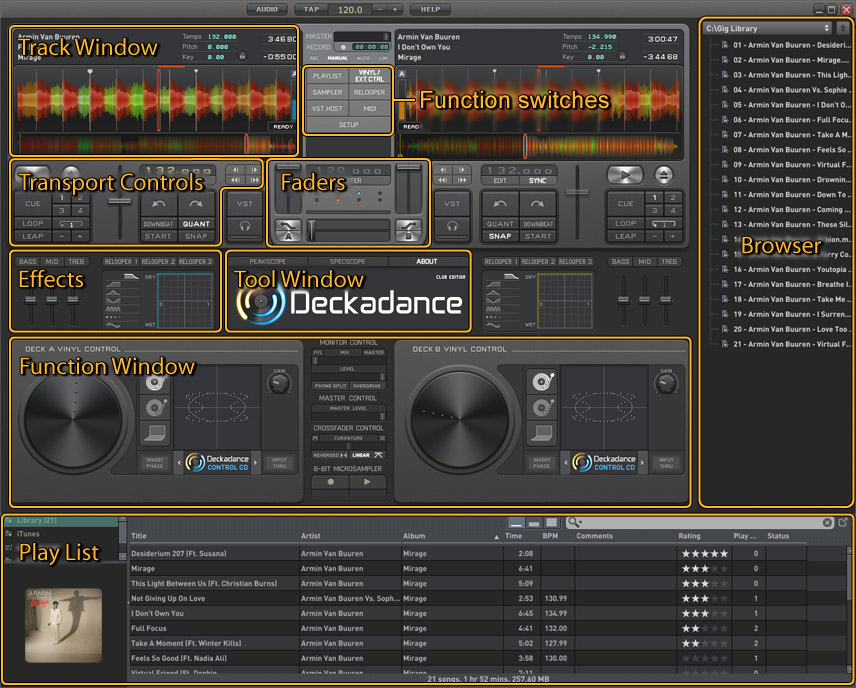
- #SETTING UP ABLETON LIVE FOR MAC HOW TO#
- #SETTING UP ABLETON LIVE FOR MAC DRIVERS#
- #SETTING UP ABLETON LIVE FOR MAC MAC#
Limiting turns up the quiet parts of your podcast while maintaining the volume of the loud sections. If the volume of your podcast is generally quite low, consider using Live’s Limiter. Generally, a podcast is quite simple to process and using a good quality microphone can help you bypass any additional processing. By using a variety of plugins and effects, you can increase the professionalism of your new podcast. While it isn’t always necessary, this step may help you achieve the best sounding podcast possible. Left-click and drag your cursor to select a region of the recording you wish to remove.Ĭonnect the split audio recording together to complete the seamless edit. This will make it possible to make precise cuts that aren’t fixed to the grid. Start by right-clicking anywhere on the grey area in arrangement view, then under ‘ Fixed Grid‘, select ‘ Off‘. This could include misspoken sentences, pauses in the recording, unpleasant errors or simply sections you want to remove.

In this step, we’re going to cut out any unwanted sections of the podcast. To conclude recording, press the stop button adjacent to the record button or hit ‘ Spacebar‘ on your keyboard. The record button will turn red when recording is in progress. When you’re ready to begin recording, head to the top of the Live window and select the black record button.
#SETTING UP ABLETON LIVE FOR MAC MAC#
To arm recording on multiple audio tracks, simply hold on Mac or on Windows and click each arm recording button. Simply navigate to an audio track and select the arm recording button near the track number and solo button. This means that an audio track is ready to record audio when the project’s recording function is enabled. ( If you have headphones set up as your main output and would like to hear your own voice while you record, select the ‘ In‘ button on the Monitor section of an audio track.)įirstly, we’re going to arm recording on each audio track. Lastly, ensure that the correct microphone input is selected from the numbered drop-down box on each audio track.Īn audio track will start metering if a microphone has been set up correctly. Make sure that the ‘ Audio Input Device‘ is set to your microphone or the audio interface connecting your microphone(s) to your computer. Open Live’s preferences and select the ‘ Audio‘ tab. If you plan on incorporating any pre-recorded material such as music or an introduction, simply place it onto an additional audio track. Alternatively, you can press on Mac or on Windows. You can do this by accessing the ‘ Create‘ menu and selecting ‘ Insert Audio Track‘. Create an audio track for each microphone you have setup.

#SETTING UP ABLETON LIVE FOR MAC HOW TO#
(If you are using a Focusrite interface, click here to learn how to set it up and use it with Ableton Live.) For the best sounding results, try using a microphone for each person participating in your podcast.

#SETTING UP ABLETON LIVE FOR MAC DRIVERS#
Make sure that any necessary drivers are installed that may accompany your USB microphone or audio interface. Whether you’re using a USB microphone or an audio interface, Ableton is capable of recording audio using almost any microphone available. Start by setting up any microphones you wish to use. Without further adieu, let’s get started! Hi, I’m Ben from Live Aspects and today we’ll be learning how to record a podcast using Ableton Live in just 5 SIMPLE STEPS: Share your voice with the world using Ableton Live. Looking to start your own podcast? With more than 144 million active podcast listeners in the United States alone, there’s never been a better time to join the growing list of podcasters.


 0 kommentar(er)
0 kommentar(er)
